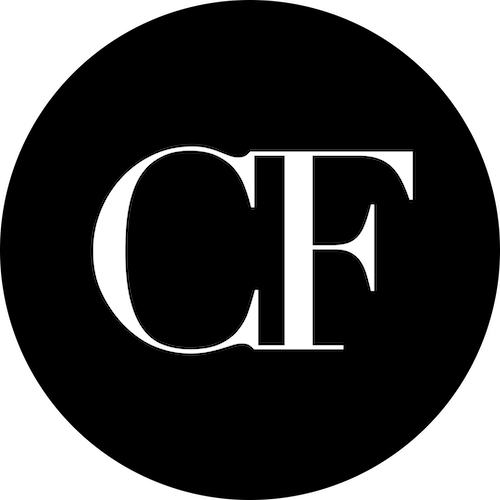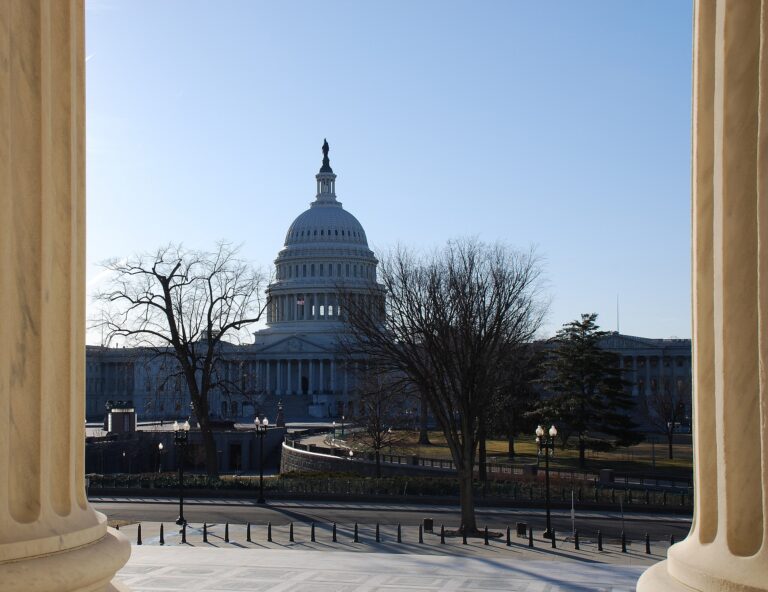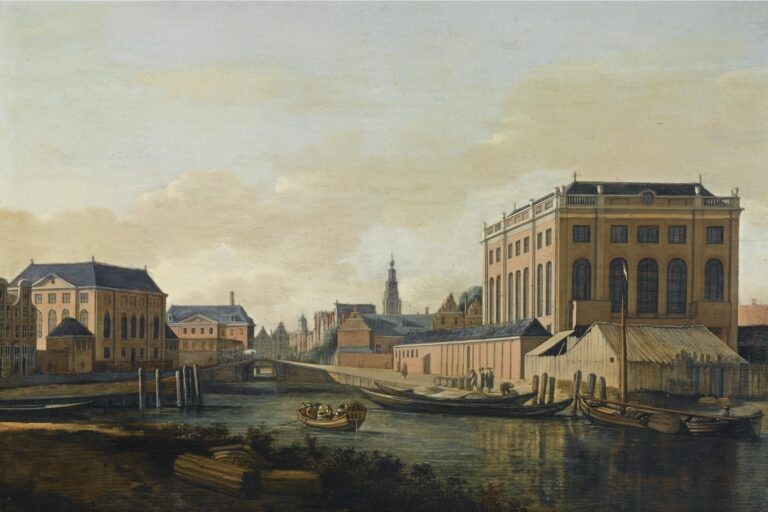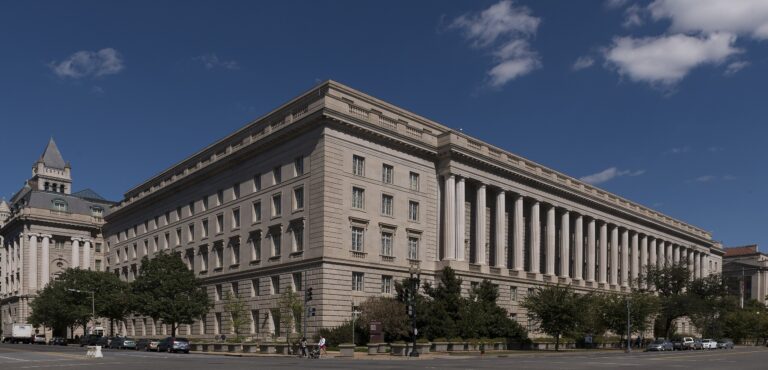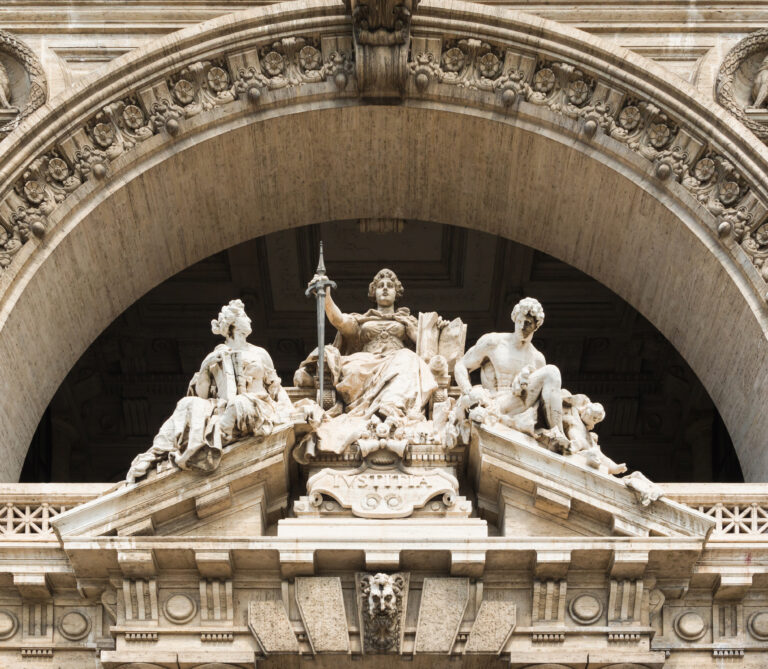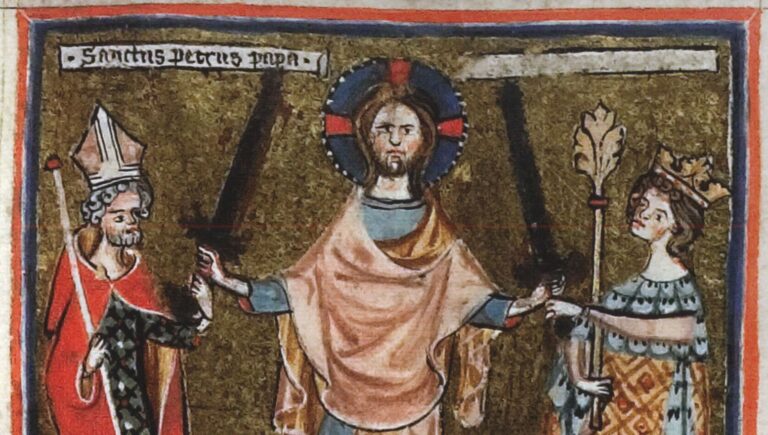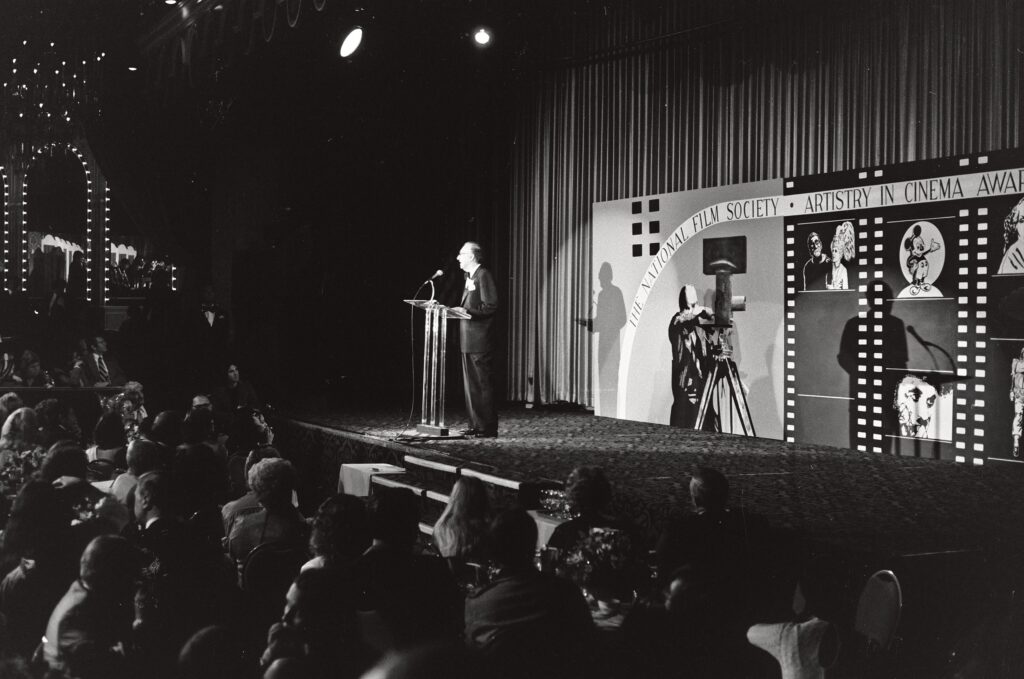
Mike Nichols, the Making of Who’s Afraid of Virginia Woolf?, and the Catholic Legion of Decency
Emily Turner
Photo of Mike Nichols at the National Film Society Convention by Alan Light (CC BY 2.0).
In the fall of 1966, Hollywood studio magnate Jack Warner and a young first-time director, Mike Nichols, faced independent, but interlocking conundrums. The trouble centered on the film adaptation of Edward Albee’s award-winning play, Who’s Afraid of Virginia Woolf?—the Broadway production of which had been critically acclaimed as “scorching, scalding, [and] revealing,” in its depiction of a marriage unfolding over a drunken evening shared by two couples belonging to the college faculty set in a small, midwestern town. Warner feared the film would not receive the approval of the Catholic Church’s censorship apparatus, popularly known as the Catholic Legion of Decency, due to its abundance of profanity and scandalous references. For his part, Nichols, the toast of New York’s literary and entertainment elite, faced another problem. He had been thrown off the lot of his own movie due to his insolence and Warner’s strategy to cut production costs.
This essay, taken from a larger piece on the film’s history, tells the story of censorial subversion that played out in the making of Who’s Afraid of Virginia Woolf?. Although the story unfolds at a watershed moment for Hollywood censorship, features former first lady Jacqueline Kennedy, and implicates governmental, religious, and private organizations, it is notably absent from relevant scholarship in both film studies and law. By demonstrating that mid-century censorship of American films was the product of a complex matrix of popular and official movements working in tandem, this essay aims to highlight the Roman Catholic Church’s influence on the history of American freedom of expression through the Legion of Decency. It further suggests that renewed attention to both the history of censorship and its undermining may be informative as liberal democracies confront contemporary challenges posed by new forms of media technology and a resurgence of populist sensibilities.
Martha: Truth or illusion, George; you don’t know the difference.
George: No, but we must carry on as though we did.
~Edward Albee, Who’s Afraid of Virginia Woolf? (1962)
A Brief History of American Film Censorship
Prior to 1915, American motion picture censorship was characterized by a veritable “wild west” of regulation wherein local sheriffs and police commissioners routinely issued or withheld film screening permits according to their personal sense of a movie’s propriety, or its danger to the moral health of the community they oversaw. The ensuing decades saw controversy over whether, and on what basis, the state could restrict access to certain films by means ranging from withholding business licenses to explicit censorship of film content. In 1915, the Supreme Court of the United States unanimously upheld state censorship of films in Mutual Film Corporation v. Industrial Commission of Ohio on the grounds that, unlike the constitutionally protected press, films were entertainment and not protected speech. This position was not only welcome news to predictable actors like religious groups and clergy, but also to less obvious entities like public school teachers, who understood their mission at the turn of the 20th century to consist in “the creation of good citizens, whose highly-defined moral behavior would prove that America’s experiment with democracy would survive.”
The recognition that films could be censored by the government induced the film industry to see to it that the government would not undertake to do so. As education scholar Robin Gallagher has written, “By 1919, the motion picture industry realized that the only way to head off federal censorship efforts, as well as a growing number of state and local ordinances,” would be to self-impose a regulatory scheme on the movie industry in an effort to assure the public of its moral credibility. To this end, “[t]he Motion Picture Producers and Distributors of America (MPPDA) hired Will H. Hays in 1922, postmaster general of the Harding administration and an elder of the Presbyterian Church, to act as a liaison between the industry and the public.” A man of trusted personal and professional integrity, the Hays Office would come to be the center of the effort to save Hollywood for itself.
The most important product of the Hays Office was the 1930 Movie Production Code, administered by the Production Code Administration. The Movie Production Code was a collaborative effort of government, private, ecclesial, and Hollywood officials and insiders, as well as Hays’ personal political skill. Stakeholders recognized the value of regulation in film, but did not want the Code to be seen as a product of the Church, or the State, or the film industry alone; the Hays Office therefore functioned as a screen, or cover, for all involved. The 1930 Code was grounded in three “General Principles”: 1) to produce no film that would ‘lower the moral standards” of those who saw it by, for instance, eliciting audience sympathy for ‘crime, wrong-doing, evil, or sin’; 2) to produce no film which ridiculed ‘[l]aw, natural or human’ or which generated sympathy for the violation thereof; and 3) to portray ‘[c]orrect standards of life.’
Under these principles were specifications ranging from prohibitions on obscenity and miscegenation to limitations on content involving, “impure love,” “venereal diseases,” “White slavery,” and conditions for representation of the clergy. The Code was also “[a]wash with ambiguous terms” and oxymoronic language—as, for instance, when it permitted such things as “tasteful vulgarity” or “refined unpleasantness.” Still further, writes historian William Johnson:
As with earlier self-censorship efforts, the industry intentionally failed to provide in the Code any enforcement mechanism, leaving the studios free to ignore it whenever a cost/benefit analysis suggested moving forward with a project that was bound to incur problems with state and municipal censors, in the hope that the attendant publicity, coupled with whatever salaciousness remained following the various censorship efforts, might net out at the box office.
These features of the Code meant that the public continued to be exposed to films such as Selznik’s Gone with the Wind (1939), and Hitchcock’s Notorious (1946) and Strangers on a Train (1951), which had cultivated an audience yet were perceived to be corrupting and corrosive by many.
Unwilling to abandon the sheep of their flock to the financially motivated wolves of Hollywood, the American Roman Catholic clergy took matters into their own hands. Doing so, the Catholic Church emerged as one of the most visible and influential forces in the public debate over film censorship. In 1934, the Church established the National Catholic Office for Motion Pictures, popularly known as the Catholic Legion of Decency. Operating as the censorship apparatus of the Church, the Legion bypassed both the state and the movie industry by encouraging Catholics to, “‘pledge themselves to refrain from patronizing motion pictures which offend decency and Christian morality,’ so that eventually ‘millions of Americans’ would together ‘rid the country of its greatest menace—the salacious motion picture.’” Promoted at the diocesan and parish levels, American Catholics took such pledges—recognizably similar to religious creeds— and participated in grassroots-level economic boycotts. Their protests of supposedly “indecent” films on the part of “decent and ordinary” people demonstrated their promise to abstain from attending films the Church did not approve.
Catholics were not formally bound to take the pledge or to refrain from seeing films which the Legion had condemned, since, “attendance at such a film is not a sin, but an occasion of sin, that is, a person, place or thing likely to lead one into sin.” Furthermore, the producer of a film was never obliged by anything other than his business sense to remove scenes recommended by the Legion. Yet, over the course of the 1930s, the aspirations of the Catholic clergy proved vindicated. Not only Catholics, but large communities of Protestants and others who felt let down by inconsistent or inefficient regulation on the part of the movie industry itself, participated in the boycott of films not approved by the Legion of Decency, even without a pledge to the Catholic Church.
Who’s Afraid of Filming Virginia Woolf?: Everyone
Within this network of regulation and censorship—overlapping and interacting, popular and official—the production of Who’s Afraid of Virginia Woolf? took place. While studio magnate Warner worried over the Legion of Decency’s reception of the film, and director Nichols was exiled from the movie lot, Cosmopolitan magazine ran a headline in its October 1965 issue which read, evidently only partly in jest, “Who’s Afraid of Filming Virginia Woolf? Everyone Involved with the filming of the play is—but production proceeds.” The piece cited an interview with the film’s writer-producer Ernest Leahman, who dismissed a question about censorship concerns saying, “Censorship? I’m not even going to think about it.” Mr. Leahman insisted he and the production team believed that the “quality of the picture” would garner all desirable public approval. Still, the article described his role as “the man in charge of all the dynamite.”
In his 2021 biography, Mike Nichols: A Life, author Mark Harris writes that the Production Code Administration, “had been on alert” since before the project even began, aware that Albee’s play pushed the boundaries of propriety accepted at the time. Harris writes: “Albee’s profane, scabrous language had been a jolt even to sophisticated theater audiences; in mainstream movies, the words his characters tossed around so casually had never been heard.” Even if the unenforceable Code would permit some envelope-pushing language, Warner and his studio were aware that, “any off color language that the Code could be persuaded to let slip would surely run afoul of its religious counterpart.” The implications were not insignificant. A rating of ‘condemned,’ from the Catholic Church, or the denial of approval from the movie producers’ association would have rendered a movie version of Virginia Woolf unplayable for a large number of theater chains. This was not because of legal censorship, but because of the financial reality created by popular adherence to the word of the Catholic clergy.
The nature of Warner’s problem presented a possible solution to the one Nichols faced. Desperate for a way to regain access to his project, Nichols went to Warner with a proposal. As Harris narrates, “If Warner would let him back into the editing room, he would enlist a powerful ally to get the movie past the […] Legion of Decency. Nichols promised he would arrange for Jacqueline Kennedy to join the eighty judges at the National Catholic Office for Motion Pictures for their screening, sit directly behind the primary decision makers, or, as he put it, ‘Monsignor What’s-His-Face,’ and, when the lights came up, say, ‘What a beautiful movie. Jack would have loved it.’” In 1966, Jackie Kennedy was a wildly sympathetic figure as the widow of the slain Catholic president, and was regarded as morally authoritative and personally popular. Nichols promised Warner that Kennedy would neutralize the threat to Virginia Woolf posed by the Legion.
“She was a friend,” Nichols said later, “I knew she would.”
Mr. Warner was ready to bargain and accepted Nichols’ proposition. In due course, Mrs. Kennedy did exactly as the young director had promised.
“We made the deal, and I finished the picture,” Nichols recalled. “It’s the only time in my life I’ve ever used a friend in that way.”
In the end, the Legion did not condemn the film. Rather, for the first time it added to its standard designations of A-I (“morally unobjectionable for the general public”), A-II (“morally unobjectionable for adults”), B (“morally objectionable in part”), and C (“condemned” as immoral), a new designation, A-IV: “morally unobjectionable for adults, with reservations.” After the MPAA (formerly the MPPDA, now the Motion Picture Association of America) initially insisted it must withhold its seal of approval for clear violations of the Code, it, too, gave the film its imprimatur, further compromising its legitimacy.
The inconsistency did not go unnoticed. In her weekly column in America magazine, longtime film reviewer Moira Walsh wrung her hands, perplexed by the Legion’s failure to condemn the film and the MPAA’s decision to approve it. Notwithstanding her work as a Legion consultor, Walsh herself was no uniform proponent of the Legion’s determinations—having publicly questioned the judgments of “a rating system that can condemn a serious attempt at cinema art like The Pawnbroker for the sole reason that it shows a young woman baring her bosom.” Yet, in her column published on July 30, 1966, Walsh wrote that it was difficult to understand “the controversial decision of both organizations to permit Virginia Woolf to employ material to which, as a matter of record, they usually object.”
Absent further information, the decisions of the MPAA and the Legion of Decency are indeed confounding. But the explanation was no mystery to those at the center of it. Nichols was not secretive about Mrs. Kennedy’s role in the making of Virginia Woolf; he spoke about it repeatedly in formal and informal contexts over the course of a half-century. The story is an important one not primarily for the way it demystifies a curious inconsistency, but for the way it points to the unofficial acts by which individuals exercise agency in the face of systems meant to restrict them.
Conclusion
In some ways, the story of the production of Virginia Woolf is a simple reflection of the liberalization of the restraints on film content during the 1960s. Indeed, scholars of film history regularly cite the years 1967-68 as a watershed, ushering out the old and ushering in the new regulatory regime. In other ways, however, the story contains more fundamental lessons about the nature and power of censorship. Nichols’ story is not just about the power of court-sanctioned or religiously-orchestrated or economically-driven censorship alone, but about the powerful confluence of the three. It is a warning about the danger of entire industries deciding against the production of material potentially deemed objectionable. It is not only the story of powerful institutional actors, but of individuals exercising agency in the face of those censorship regimes. The story is a reminder that content should not be banned because one finds it in bad taste or morally objectionable. And it is a summons to attend seriously to the distinction between “taste” and “threat”—not only for the sake of freedom of thought or liberty of taste, but in the interest of accurate assessments of genuine danger.
Today, battles over censorship do not center on Hollywood or the film industry, nor do they primarily target the same issues of crass language, gruesome violence or sexual passion. Still, as Mark Twain is said to have remarked, while history may not repeat itself, it does rhyme. Efforts by religiously motivated communities continue to impact public educational curriculum, book banning, and parents’ rights, even without state legislation. In other areas, the normative power of artificial intelligence is only beginning to be confronted. The story Nichols tells, then—about the power of relationships, the fragility of the most formidable institutional actors, and the ultimate futility of attempts to shut down the circulation of ideas—points to the importance of vigilance, creativity, and the exercise of individual agency in the resistance of regimes which would shut down the flow of ideas. ♦

Emily Turner is a Ph.D. candidate in Historical Theology at Boston College. Her areas of interest include the co-emergence of Christian legal and theological traditions in the 3rd to 5th centuries, as well as the history of canon law since its codification in 1917.
Recommended Citation
Turner, Emily. “Mike Nichols, the Making of Who’s Afraid of Virginia Woolf?, and the Catholic Legion of Decency.” Canopy Forum, July 3, 2025. https://canopyforum.org/2025/07/03/mike-nichols-the-making-of-whos-afraid-of-virginia-woolf-and-the-catholic-legion-of-decency/.
Recent Posts

